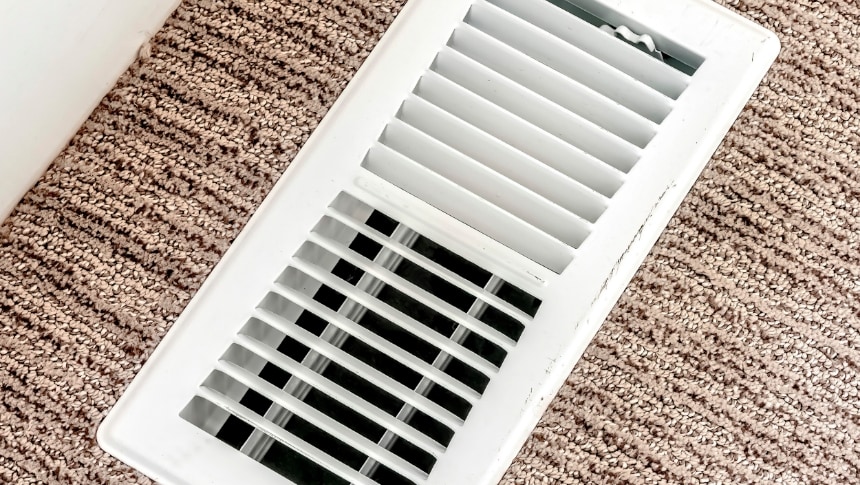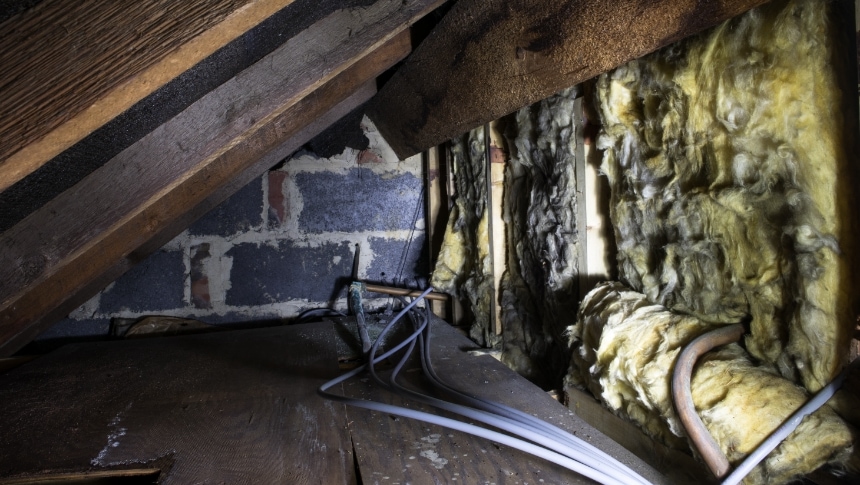For homes with central heating, ductwork can have a major impact on how well a heating and cooling system performs. Ductwork is the system of tubes used to transport air to and from a furnace or heat pump. When ductwork in unconditioned areas is damaged, leaking, poorly sealed or uninsulated, it can waste energy, lead to higher utility bills and shorten the lifespan of heating and cooling equipment.
Unconditioned spaces such as attics, basements and crawlspaces commonly contain ductwork that should be checked. Let’s cover some common warning signs and ways to identify duct leaks in these areas.
Signs your ducts need to be addressed
- High utility bills – Your air ducts deliver conditioned air all throughout your home. When air escapes through leaky ducts before getting to the intended areas, it can add hundreds of dollars to your heating and cooling costs each year. It also puts extra strain on your heating and cooling systems.
- Hot and cold spots – Uneven heating and cooling typically means hot or cool air is collecting in certain areas, while others aren’t getting the conditioned air they need. This lessens the overall comfort of your home and could be due to leaky ducts or bad duct design.
- More dust – If you notice large amounts of dust consistently collecting on certain surfaces, your ducts might be the issue. Leaky ducts can pull in accumulated dust from your attic or basement and spread it through your home, which can affect indoor air quality.
- Insulation on your air filter – If you find insulation on your filter when you go to change it, you likely have leaks on the return side of your duct system. This portion of the ducting is responsible for bringing air back to the heating system and is typically a rectangular duct, larger than the supply ducts that run to the registers that blow air into the house.
Locating leaky ductwork
While it’s best to use a professional to repair leaky ductwork, there are some simple steps you can do on your own to identify leaks.
- Check registers – Turn your HVAC system on and open all registers. Your registers are typically located on the wall, ceiling or floor, and have a damper or flaps that can be opened and closed to adjust airflow. When opened, does conditioned air come out of each register? If not, there’s likely a problem within your ductwork that’s affecting the flow of conditioned air.

- Visually inspect the ductwork you have access to – Check your attic, crawlspace or basement, and examine the visible ducts. Look at each section and connection point for gaps, tears or disconnections. Areas that have duct tape affixed are common trouble spots because a leak already exists and the repair may or may not be holding up. The presence of discolored insulation is another red flag.

- Turn on your HVAC system and re-inspect – With your heating and cooling system on, return to the areas with visible ductwork. Check each section and place your hand over the connections, especially duct joints. If you feel air against your hand, the connection is loose and there’s a leak.
- Mark the leaks – Once you’ve identified air leaks, you can use a grease pencil to mark the problem areas so they can be fixed once a full inspection is complete. For insulated ducts, you can use a ribbon or string as a marker.
DIY fixes for minor leaks
If there are obvious holes, gaps or disconnections in ducts that you can access, there are some initial steps you can take.
- Seal the leaks and holes you can access using duct sealant (UL-181 mastic, applied at a minimum of the thickness of a nickel), or metal-backed foil tape. Don’t use grey duct tape, as it isn’t as long lasting.
- Wrap ducts that go through unconditioned spaces with duct insulation to prevent them from getting hot in the summer and cold in the winter.
- If you need to reconnect metal sections of ducts, self-drilling or self-piercing hex head screws are a good option.
If you do choose to DIY, once you seal and insulate your ducts, have a professional test that your system is balanced.
When to hire a contractor
Sealing ducts is a messy project that requires the right materials, and leaks can be tricky to repair. Hiring a professional for a more comprehensive inspection and to make repairs is always a good decision if you believe your home has leaky ducts. Your contractor will know which materials perform best and are rated for mechanical systems, and how to prioritize and measure effectiveness.
If you need help finding a contractor, Energy Trust can connect you with qualified trade ally contractors in your area.



